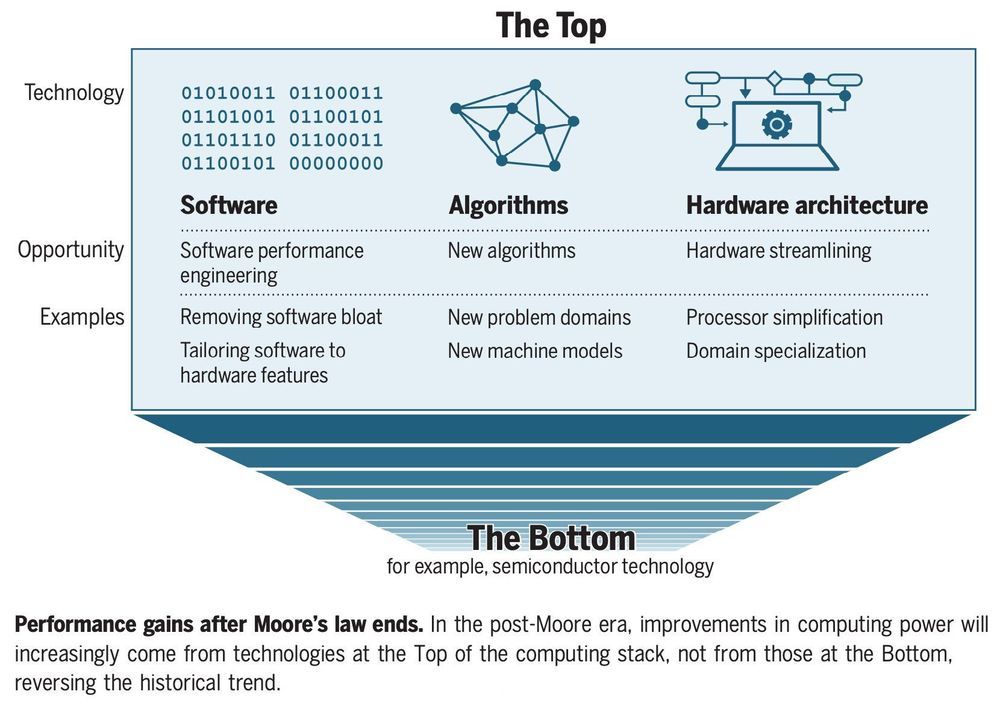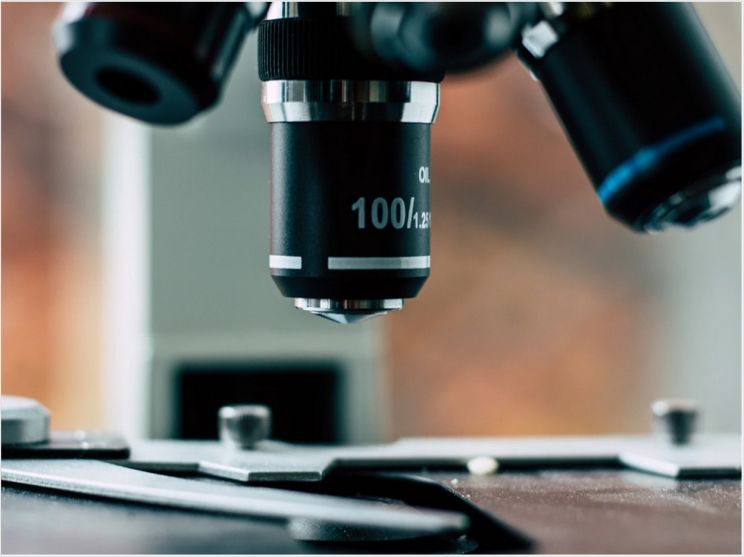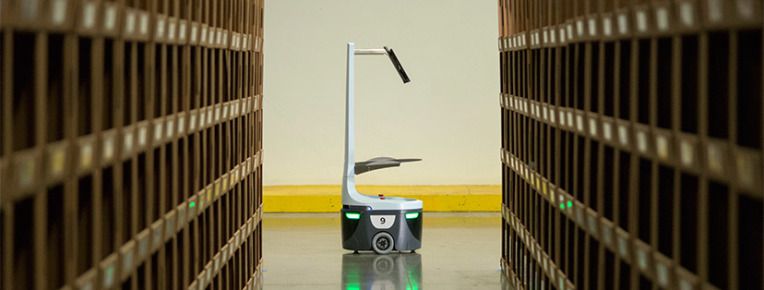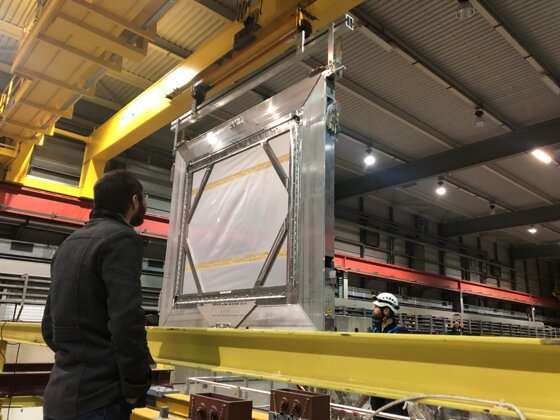Page 7756
Jun 6, 2020
If transistors can’t get smaller, then software developers have to get smarter
Posted by Saúl Morales Rodriguéz in categories: computing, internet, mobile phones
In 1965, Intel co-founder Gordon Moore predicted that the number of transistors that could fit on a computer chip would grow exponentially —- and they did, doubling about every two years. For half a century Moore’s Law has endured: computers have gotten smaller, faster, cheaper and more efficient, enabling the rapid worldwide adoption of PCs, smartphones, high-speed Internet and more.
This miniaturization trend has led to silicon chips today that have almost unimaginably small circuitry. Transistors, the tiny switches that implement computer microprocessors, are so small that 1000 of them laid end-to-end are no wider than a human hair. For a long time, the smaller the transistors were, the faster they could switch.
But today, we’re approaching the limit of how small transistors can get. As a result, over the last decade researchers have been scratching their heads to find other ways to improve performance so that the computer industry can continue to innovate.
Jun 6, 2020
Huge $161 Million Investment Means Meat Without the Animal Is Here
Posted by Omuterema Akhahenda in categories: food, sustainability
The number of startup companies and the amount of investment dollars going into the field of cultivated meat has exceeded—and will likely continue to exceed—annual exponential growth.
As we race to find sustainable ways to feed the world’s insatiable appetite for meat, the field of cultivated meat has exceeded annual exponential growth— more than doubling every year in terms of the number of startup companies and investment dollars. In late 2015, one startup raised a few hundred thousand dollars. In 2020, there are dozens of cultivated meat companies around the world pursuing everything from shrimp and bluefin tuna to steak and kangaroo.
This year, the sector took another significant step forward when cultivated meat first-mover Memphis Meats closed a $161 million Series B funding round from lead investors Softbank, Norwest, and Temasek. This amount is greater than all other publicly disclosed investments in cultivated meat companies combined and brings total investment in the startup to $181 million.
Continue reading “Huge $161 Million Investment Means Meat Without the Animal Is Here” »
Jun 6, 2020
Rapamycin Fights Gum Disease and Spurs Bone Growth in Older Mice
Posted by Omuterema Akhahenda in categories: biotech/medical, life extension
Rapamycin, a drug that has life-extending effects on mice (and possibly dogs and humans), also reverses age-related dental problems in mice. 🦷 Out now in eLife from researchers at The University of Washington School of Dentistry & JAX’s Kaczorowski Lab:
Rapamycin, which has life-extending effects on mice, also reverses age-related dental problems such as periodontitis and regrows bones in the animals.

As we celebrate the #SpaceStation20th anniversary, NASA astronaut Don Pettit explains how his perception of the Earth changed during his time aboard the space station.

Go NASA’s Hubble Space Telescope. It’s your birthday. ✨
This Friday marks 30 years of stunning imagery and ground breaking discoveries for the one-of-a-kind orbiting telescope. Join us in observing #Hubble30 by sharing your favorite galactic image! https://go.nasa.gov/3aoSMxH

It took centuries, but we now know the size of the Universe, this will blow your mind! 😱
More space facts: https://amazingfact.co/category/spacefacts/
Jun 6, 2020
From Ferdinand Magellan’s voyage to the first mission to Mars
Posted by Bruce Dorminey in categories: alien life, chemistry, geopolitics, habitats, physics, robotics/AI, sustainability, treaties

Pleased to have been the guest on this most recent episode of Javier Ideami’s Beyond podcast. We discuss everything from #spaceexploration to #astrobiology!
In this episode, we travel from Ferdinand Magellan’s voyage to the first mission to Mars with Bruce Dorminey. Bruce is a science journalist and author who primarily covers aerospace, astronomy and astrophysics. He is a regular contributor to Astronomy magazine and since 2012, he has written a regular tech column for Forbes magazine. He is also a correspondent for Renewable Energy World. Writer of “Distant Wanderers: The Search for Planets Beyond the Solar System”, he was a 1998 winner in the Royal Aeronautical Society’s Aerospace Journalist of the Year Awards (AJOYA) as well as a founding team member of the NASA Astrobiology Institute’s Science Communication Focus Group.
Continue reading “From Ferdinand Magellan’s voyage to the first mission to Mars” »
Jun 6, 2020
Locus Robotics raises another $40M as retailers increasingly look to automate
Posted by Omuterema Akhahenda in categories: biotech/medical, business, information science, robotics/AI
The COVID-19 pandemic will have a profound impact on robotics, as more companies look to automation as a way forward. While wide-scale automation had long seemed like an inevitability, the pandemic is set to accelerate the push as corporations look for processes that remove the human element from the equation.
Of course, Locus Robotics hasn’t had too much of an issue raising money previously. The Massachusetts-based startup, which raised $26 million back in April of last year, is adding a $40 million Series D to its funds. That brings the full amount to north of $105 million. This latest round, led by Zebra Technologies, comes as the company looks to expand operations with the launch of a European HQ.
“The new funding allows Locus to accelerate expansion into global markets,” CEO Rick Faulk said in a release, “enabling us to strengthen our support of retail, industrial, healthcare, and 3PL businesses around the world as they navigate through the COVID-19 pandemic, ensuring that they come out stronger on the other side.”
Jun 6, 2020
Cracking open the proton
Posted by Quinn Sena in categories: biotech/medical, supercomputing
:0000
Physicists around the world are cracking open the proton, within the nucleus of the atom, to see what’s inside.
The proton is a fundamental building block of the atomic nucleus, and among other things it’s used as a medical probe in magnetic resonance imaging. It also has a rich inner structure made up of subatomic particles called quarks and gluons, which bind the quarks together.













